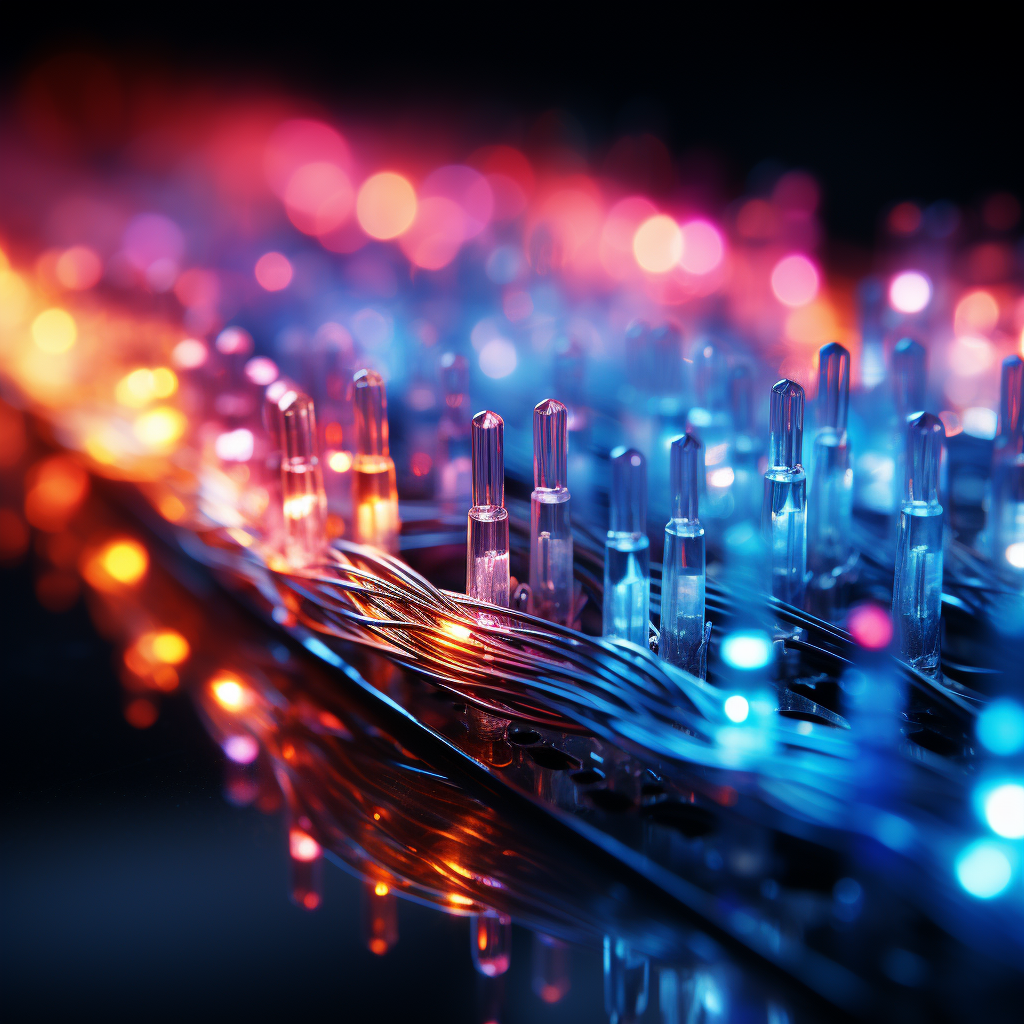
What are the principles of fiber optics, and how do they enable high-speed data transmission?
Introduction
Fiber optics is a technology that uses glass or plastic threads (fibers) to transmit information. The principle is based on transmitting light signals via the fiber, with each light pulse representing a bit of data. Fiber optic cables have revolutionized telecommunications due to their high-speed data transmission capabilities and are now the backbone of the internet and modern communication systems.
Principles of Fiber Optics
Total Internal Reflection
The fundamental principle of fiber optics is total internal reflection. This phenomenon occurs when light traveling from a denser medium (like glass) to a less dense medium (like air) hits the boundary at an angle greater than a certain angle known as the critical angle. Instead of refracting out into the less dense medium, the light reflects back into the denser medium. In a fiber optic cable, light signals are continually reflected off the walls of the fiber and confined within, allowing them to travel long distances with minimal loss.
Modulation
Information is imposed on the light as variations in its intensity or phase, in a process called modulation. Each pulse of light represents a bit of data. The absence of light for a specific duration represents a ‘0’ bit, and the presence of light represents a ‘1’ bit. In advanced systems, different light frequencies (colors) or phases can be used to transmit additional bits of data simultaneously, significantly increasing the amount of data that can be transmitted.
Transmission and Reception
At the transmission end, an electronic signal is converted into an optical signal using a light source such as a laser or LED. This optical signal travels along the fiber optic cable until it reaches the receiving end, where an optical receiver (like a photodiode) converts it back into an electronic signal for use by electronic devices.
Advantages of Fiber Optics in High-Speed Data Transmission
Fiber optic cables have several significant advantages that make them ideal for high-speed data transmission:
High Bandwidth
Fiber optic cables have much higher bandwidth than traditional copper cables, which allows them to carry more data. This high bandwidth is what allows for the high-speed data transmission rates we see in modern communication networks.
Low Signal Loss
Because the light signals in a fiber optic cable are confined within the fiber, they can travel great distances with relatively little loss of signal strength. This quality allows for data to be transmitted over long distances without the need for repeaters.
Resistance to Electromagnetic Interference
Unlike copper cables, fiber optic cables are not affected by electromagnetic interference, which can disrupt data transmission. This resistance to interference further increases the reliability of data transmission.
Security
Fiber optic cables are more secure than traditional copper cables. Because they do not radiate electromagnetic energy, they are very difficult to tap into without physically accessing the cable, making them a secure method for transmitting sensitive information.
Conclusion
In summary, fiber optics uses principles of total internal reflection and light modulation to transmit data over large distances at high speeds. Fiber optics has revolutionized telecommunications, making high-speed internet and secure, reliable communications a reality for millions of people worldwide. As technology continues to evolve, fiber optic technology will continue to play a crucial role in shaping the future of data transmission.




